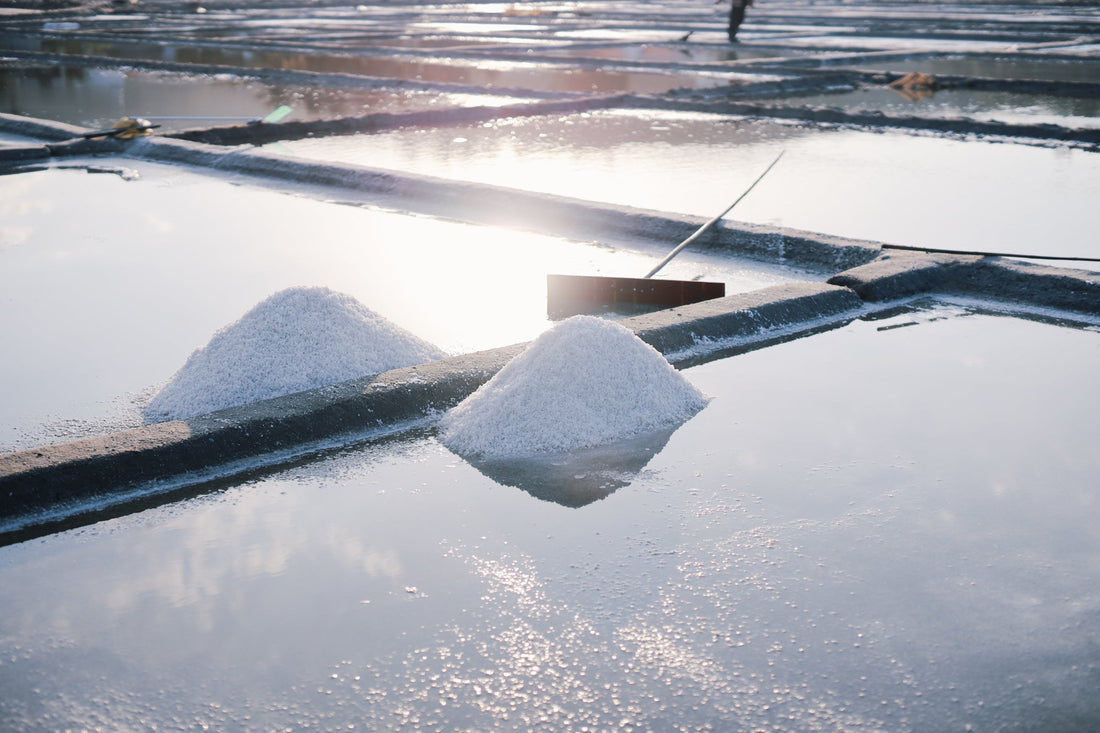
WHY SHOULD YOU USE SAHU SEA SALT?
Share
In Vietnam, most of the salt fields exposed to water are industrialized, producing sea salt on plastic sheets (plastic sheets produce high salt yield and crystallization time is faster), so the amount of sea salt circulating on the market is mostly salt crystallized on plastic sheets. A small amount of salt is produced on natural soil because quality is not considered important but only focused on quantity, so the appearance is not good (it does not look clean, has many impurities that are difficult to use as table salt, etc.) so it is often not accepted by consumers. However, for salt used as a seasoning, soil-based salt is still the best choice.
- Ground salt crystallizes slowly thanks to the coolness of the natural ground. The salt absorbs minerals from the ground, so it is rich in minerals and has a harmonious, mild salty taste. When seasoned, it helps to enhance the flavor of the dish and create a delicious salty taste. This cannot be found in tarpaulin-based salt, which contains a lot of magnesium, so the salty taste is often more bitter, astringent, and harsh.
- By not coming into contact with the plastic substrate, ground salt reduces the risk of microplastic contamination from the plastic substrate.
When using salt in cooking, there are two things that we often pay attention to: taste and safety. Therefore, ground salt is the most suitable choice, meeting the above two criteria.
What makes Sahu ground salt different?

Sahu salt is made on the traditional Sa Huynh salt fields, which are not only a place for salt production but also an ecosystem connecting the salt fields, mangrove forests, saltwater lagoons and the ocean. The biodiversity on the traditional Sa Huynh salt fields contributes greatly to the environment and the lives of local people (providing aquatic resources, helping to prevent floods, etc.)
The soil on the Sa Huynh salt field is a sedimentary clay soil that has been accumulated for thousands of years thanks to the layer of clay on the mountain (flowing down thanks to rainwater), minerals from the rocks are decomposed by organic acids in the roots of hundreds of years old forest trees flowing down to the salt fields, accumulating a black, mineral-rich layer, very favorable for crystallization of natural sea salt on the ground. Thanks to the basin terrain of the Sa Huynh area, Sa Huynh salt has become a specialty here, since ancient times people have praised each other that Sa Huynh salt is very delicious, with a mild salty taste, not astringent, and a sweet aftertaste.
After harvesting the ground sea salt from the salt fields, Sahu brings it back to be washed with clean water, dried, machine-screened and hand-separated for impurities. This helps improve the quality of the ground sea salt before it reaches consumers. Sahu's processed salt products all use carefully processed sea salt as raw material.
Besides,
The traditional salt making craft of Sa Huynh is recognized as an Intangible Cultural Heritage, closely associated with the salt making community passed down from generation to generation, and with traditional culture through the Sac Bua melodies, etc., creating the soul of Sa Huynh sea salt grains, which are not only delicious and clean but also imbued with cultural values and long-standing craft villages.
Sahu, with its mission of preserving the traditional salt fields of Sa Huynh, has contributed to improving the livelihoods of salt farmers by creating a supply chain with Sa Huynh salt farmers, purchasing and purchasing high-quality ground sea salt at high prices. Sahu accompanies salt farmers in protecting the environment and preserving salt fields through the establishment of the Traditional Sea Salt and Community Tourism Cooperative and the project "Preserving the traditional salt fields of Sa Huynh associated with developing community tourism" chaired by the Farmers' Association of Pho Thanh Ward, funded by UNDP/GEF-SGP.

